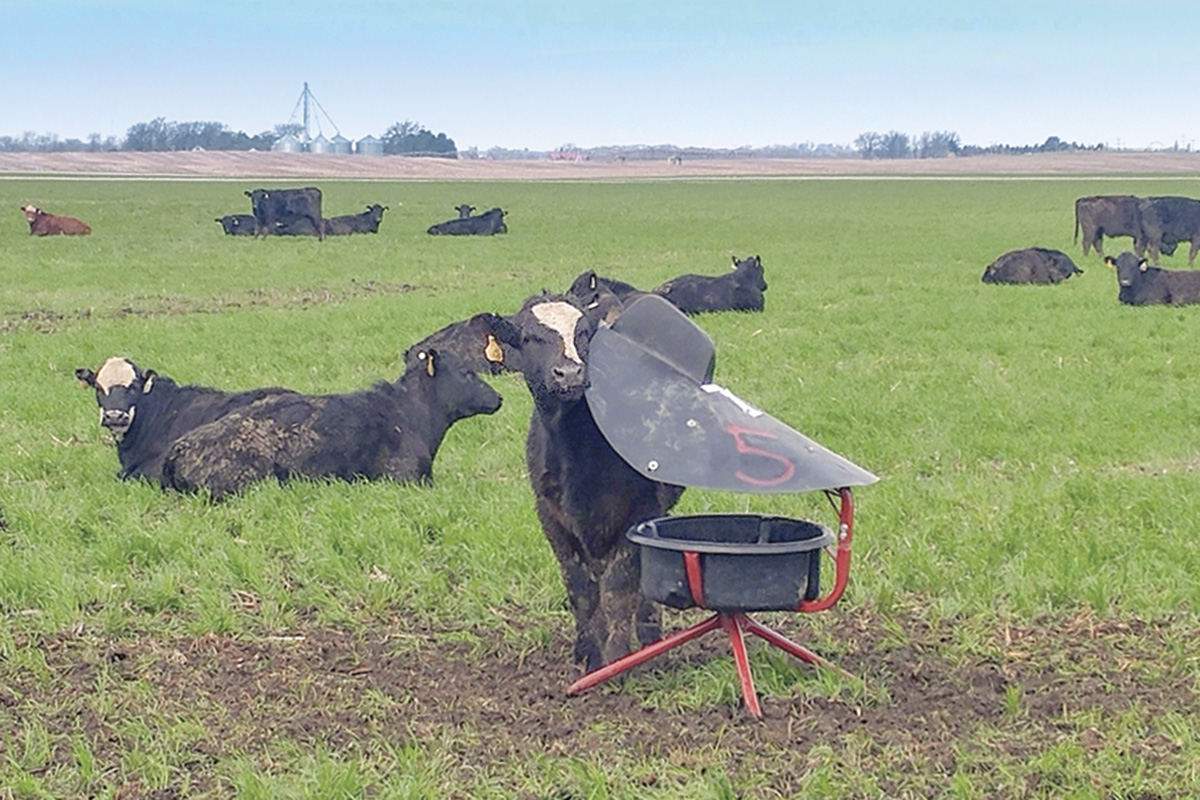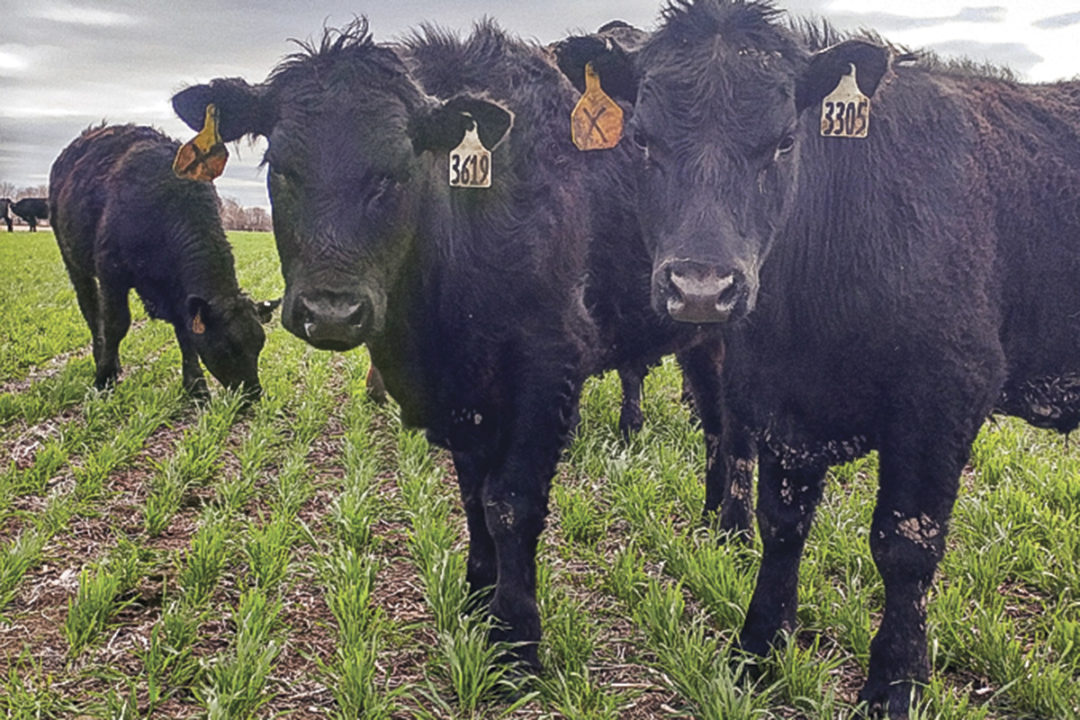As livestock graziers, “roots in the ground, all year ’round” is standard practice when managing perennial pastures, but it’s a mantra that is gaining momentum among crop growers as well. Planting cover crops is a rapidly expanding practice among U.S. crop growers. In 2012, USDA Census of Agriculture data show that 10.3 million acres were planted to cover crops; in 2017, that number increased to 15.4 million acres. Grazing cover crops is a viable practice for not only improving agronomic endeavors but also supplementing livestock operations. As a result, many operators are wondering how best to utilize cover crops for grazing.
When can I graze cover crops?
Typically, cover crops are planted in conventional systems when cash crops are nearing the end of their growth period or have already been harvested and removed from the field. The goal is to provide vegetative growth in the soil to prevent erosion from wind and water while sustaining key biological soil dynamics. The cover crop can be interseeded so that it is already germinated and established when the field is harvested, or it can be seeded after harvest to capture the remaining growing days in the year. Subsequent cover crop growth can be grazed as it grows, or even stockpiled for grazing in the winter. Spring cover crops can also capture early seasonal growth prior to cash crop planting. They may be planted in the fall if freezing is needed to stimulate germination (vernalization), or the cover may be planted after the ground is thawed in late winter. For cash crops that are planted later in the year, this may allow for several weeks of forage production that makes for excellent grazing in the spring.
What type of cover crops can my livestock graze?
In order to fit into most conventional cropping rotations, many cover crops are annual species (or cold-sensitive perennials) that aren’t likely to self-seed if allowed to reach their reproductive stage. However, some perennial species that tolerate intercropping well are also viable cover crops. Cool-season species that grow well in the spring and fall include grasses like cereal rye, winter wheat, triticale, barley and oats, as well as legumes such as clovers, Austrian winter pea and hairy vetch. Brassicas such as radishes, turnips and canola make excellent winter grazing, as the tubers retain much of their energy content well past the end of the growing season. Vendors may sell “grazing mixes” that contain a variety of grasses, legumes and brassicas. With brassicas and clovers posing potential bloat risks when grazed as monocrops, these mixes provide a dilutive effect to the risk factors associated with bloat.
Warm-season cover crops that fill a “summer slump” forage gap and are cold killed may also provide a much-needed grazing opportunity. Grasses like sorghum, sorghum-sudangrass (sudex), grazing corn, millet varieties and teff; legumes like cowpeas, sunn hemp, mung beans and soybeans; and other broadleaves like sunflower, safflower, okra and buckwheat are all good options for midseason grazing. These may be planted on a fallow crop field or as part of a mix to supplement other cool-season species. All species mentioned here have their own traits and characteristics that may make them more or less desirable for your particular situation.
 Grazing cattle may be supplemented with protein, energy, minerals or ionophores when on cover crops. Photo courtesy of Ashley Conway-Anderson.
Grazing cattle may be supplemented with protein, energy, minerals or ionophores when on cover crops. Photo courtesy of Ashley Conway-Anderson.
What should I be concerned about when grazing cover crops?
Some cover crops may have potentially toxic compounds that present health issues. Nitrate and prussic acid tend to accumulate in toxic concentrations when the plant is stressed, usually after a freezing event or in a period of drought. Warm-season grasses like sorghum, sudex and corn, as well as several brassica species, tend to accumulate nitrates, and prussic acid accumulation is a risk for sorghum and sudex. Legumes like clovers and alfalfa contain saponins, which can lead to bloat and should be grazed carefully at times of high risk (during lush growth). Cereal grains like wheat and rye can also pose a bloat risk during lush growth periods, so careful grazing management and supplementing with ionophores will mitigate this risk.
Soil compaction from grazing is a common concern among farmers who are worried about the potential impact of hoof action on their fields. Weather conditions and soil type are the most important factors in determining whether grazing will result in compaction. Compaction is more likely to occur during spring grazing, when soils are saturated with moisture, and the effects are primarily observed in the top 4 inches or so of soil. Generally speaking, grazing will not significantly affect subsequent crop yields, but proper grazing management is key to preventing detrimental soil disturbance. Keep stocking rates and densities appropriate for the availability of the forage, soil type and weather conditions. Always have a backup location that grazing animals can be moved to in the event of excess rainfall and when the field has reached the designated removal rate.
How can I find cover crops to graze if I don’t farm?
In addition to building relationships with crop growers in your area, there are several regions that have online grazing exchanges. These websites help facilitate matches between landowners who have grazing opportunities (cover crops and pasture) with livestock owners seeking grazing ground. Visit the Midwest Grazing Exchange, Match.Graze, the Minnesota Cropland Grazing Exchange, Mountain West Grazing Connection, the Nebraska Crop Residue Exchange or South Dakota Grazing Exchange for more grazing options.
Where can I learn more?
Because cover crops are growing in popularity, there is more information on how best to graze them. Seek input from your local extension office, regional grazing specialist or technical service provider. Additional information on cover crop economics, grazing management, logistical considerations and species specifications (e.g., nutritional content and seeding rate) are available to help you make the best decisions possible for your operation.
Content for this article is based on “Grazing Cover Crops,” a 2021 University of Missouri Extension publication.









